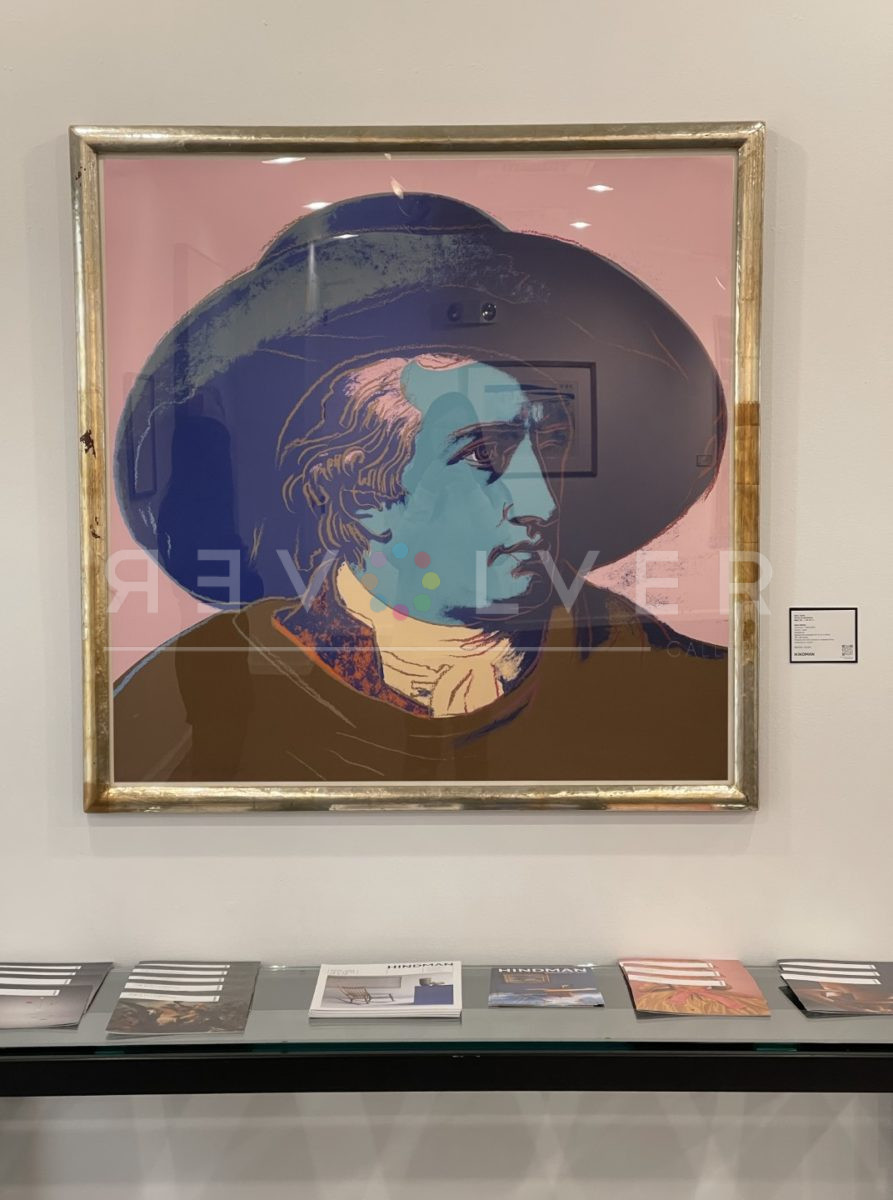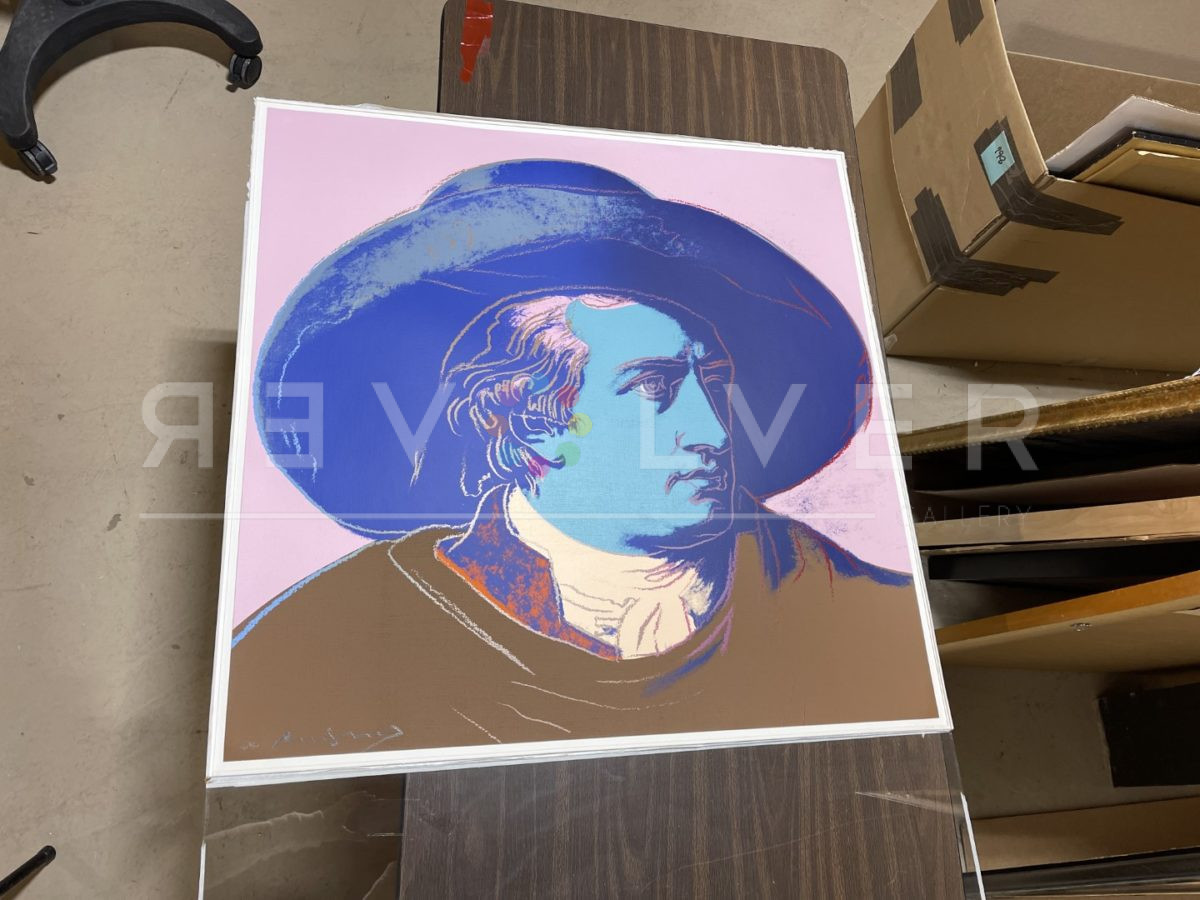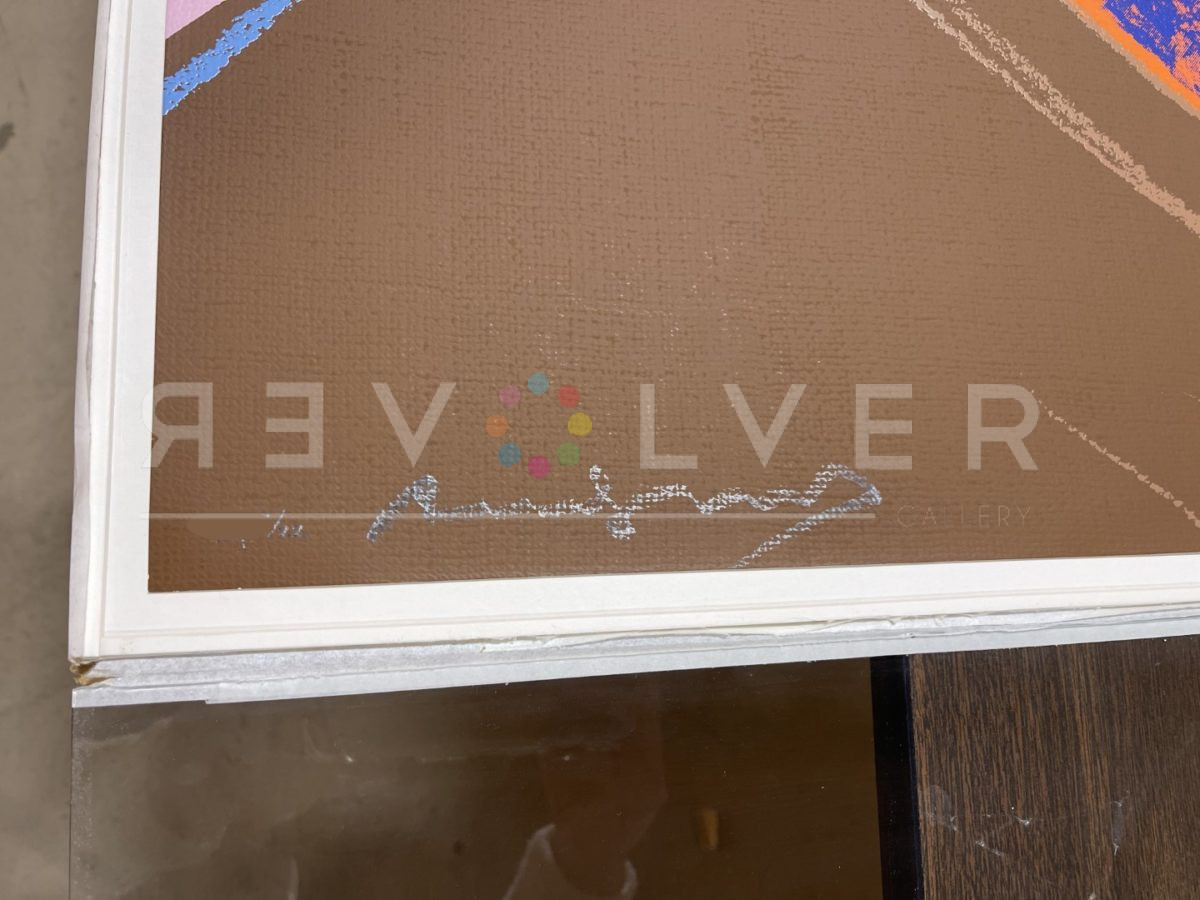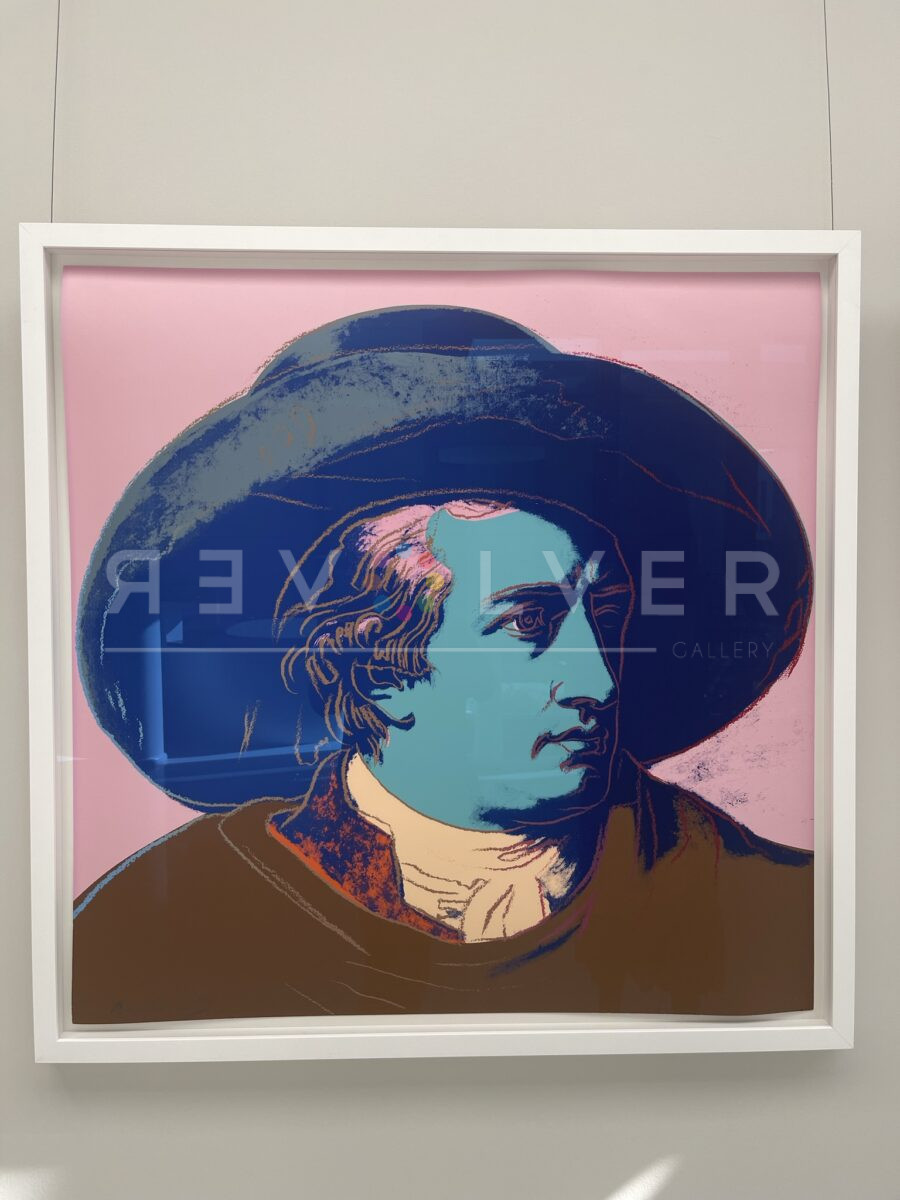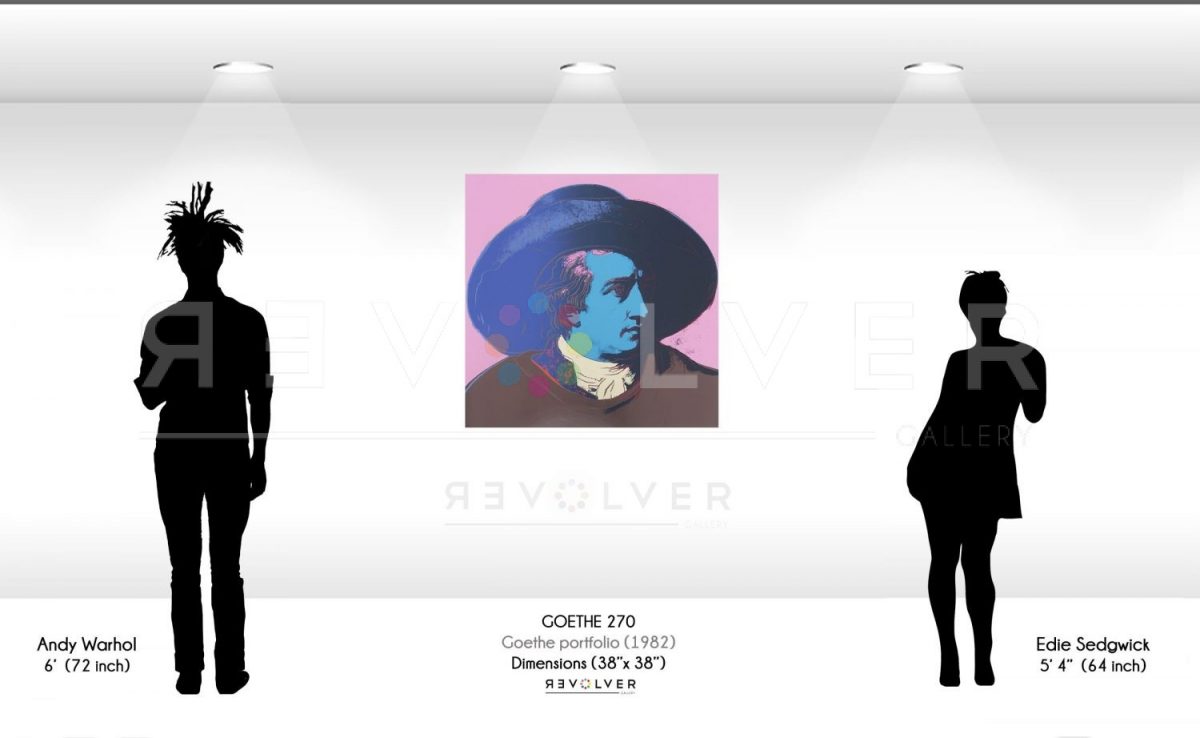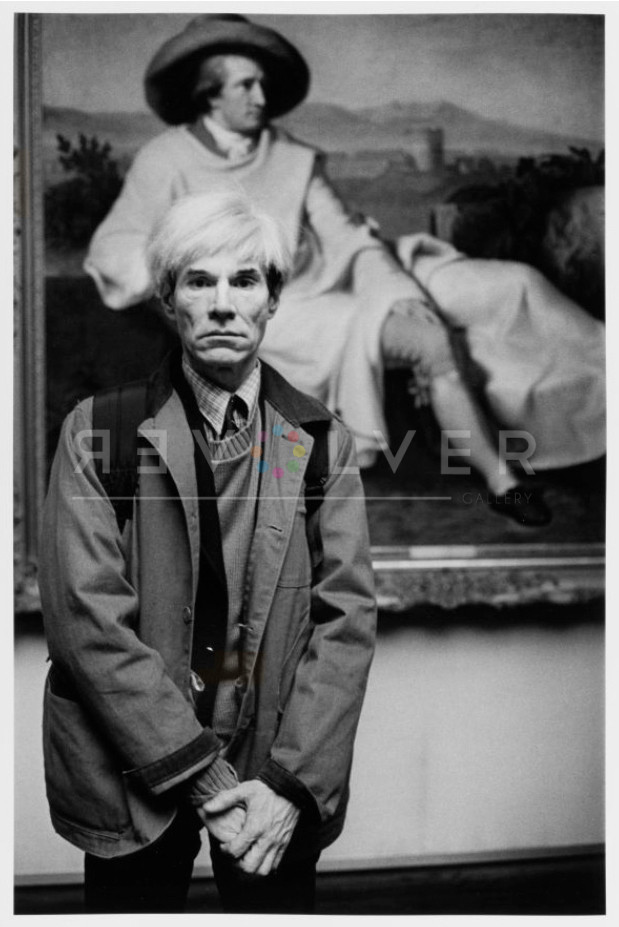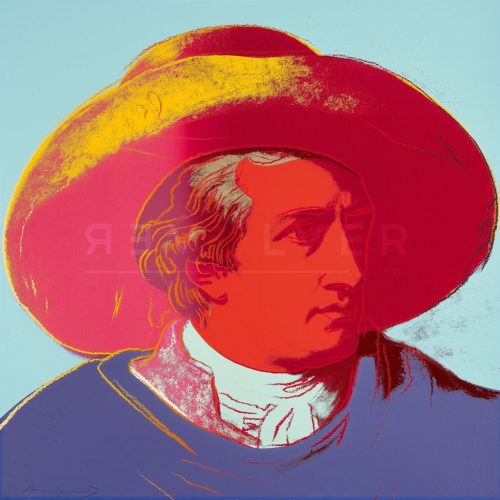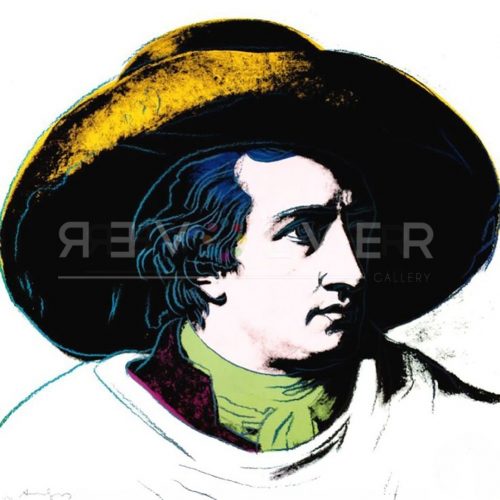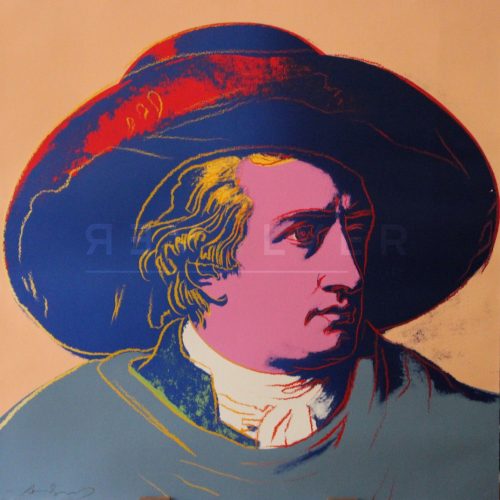Andy Warhol’s Goethe 270 is one piece in a series of portraits of the eminent German literary figure Johan Wolfgang von Goethe, published in 1982. Warhol created the series at a time when he was perhaps best known for his screenprinted portrait work, at least in the public eye, this having superseded his use of repetitive scenes such as his Death and Disaster series, and his depictions of consumer goods, such as his Campbell Soup Cans and Brillo Boxes. Additionally, it was a time when Warhol broadened his idea of celebrity to encompass subjects not necessarily contemporary. Goethe was certainly a celebrity of his time, having achieved early stardom with the publication of his work, The Sorrows of Young Werther. Goethe’s tragic story of a suicidal artist unable to bear unrequited love had a great impact on the nascent Romantic movement. However, it may be his Theory of Colours that interested Warhol the most. To that end, in Goethe 270 Warhol uses Goethe as an avatar for free exploration of different color possibilities.
Warhol adapted a detail from Johann Heinrich Wilhelm Tischbein’s–he was also known as the “Goethe Tishbein” to distinguish him from other members of his artistic family–well-known painting of Goethe in the Roman Campagna region. In the painting, Goethe is reclining, reposed on blocks of granite amongst ancient Roman ruins. His look is pensive and firm, as if he’s contemplating the entirety of humanity and its impermanence. Warhol carries over the same look in Goethe 270, and crops Goethe’s figure to just his head and shoulders. His head is thrown into deep blues, with both his face and wide-brimmed hat draped in cyan and a more regal blue, respectively. These colors, when paired with the concerned expression, give a literalness to “feeling blue”. This is further grounded by the earthy brown covering Goethe’s duster coat that sits at the bottom of the print. All of this is intriguingly framed by a nigh-fluorescent pink background, threatening to swallow up the subject. This may be reminiscent of the source material, in which Goethe ponders a civilization swallowed up by the contingencies of time and fate.
Goethe 270 is emblematic of Warhol’s other 1980s work. At this time, the artist was using high-contrast paints in combination with hand drawn lines to accent the contour of his subjects, delivering portraits that both “Pop” and provide a more realist human look. Goethe 270 is a perfect example of the added depth that imbues Warhol’s later work, in which he reached the summits of his artistic ability.
Photo credit: Portrait of Andy Warhol at the Städelmuseum in Frankfurt posing with Johann Tischbein’s Goethe in the Roman Campagna 1786-87.” Photo by Barbara Klemm, 1981.


